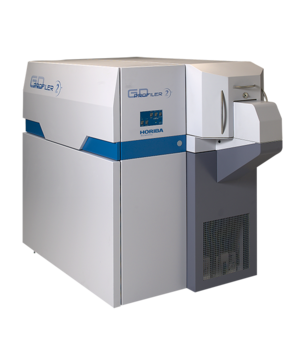
Combinaison d'une puissante source de décharge luminescente et d'une optique simultanée ultra rapide à haute résolution pour une analyse rapide du profil élémentaire en profondeur des matériaux conducteurs, non conducteurs et hybrides.
Pour les films minces et épais allant du nanomètre à plusieurs centaines de microns avec une résolution en profondeur de l'ordre du nanomètre.
Domaines d'application courants : photovoltaïque, métallurgie, fabrication de LED, études de corrosion, électronique organique et microélectronique, recherche et développement de matériaux, optimisation des processus de dépôt, PVD, CVD, revêtements par plasma, automobile, batteries au lithium, etc.
Ne nécessite pas d'UHV.
Mesure de tous les éléments d'intérêt (y compris H, D, O, Li, Na, C, N, etc.) grâce à des détecteurs à haute dynamique brevetés.
Monochromateur en option avec mode image et détection à haute dynamique pour un enregistrement du spectre complet et une flexibilité totale.
Source RF pulsée pour un fonctionnement en mode RF et RF pulsée avec adaptation automatique
Double pompage différentiel de la source pour la préparation d'échantillons MEB brevetée
Fonction de nettoyage au plasma intégrée
UFS brevetée pour la pulvérisation ultra rapide de matériaux polymères et organiques
DiP breveté – interféromètre intégré pour une mesure directe de la profondeur en ligne
Différents diamètres d'anode et accessoires pour les échantillons de forme irrégulière
Logiciel Windows 10 – Plusieurs copies fournies pour les installations à distance























































